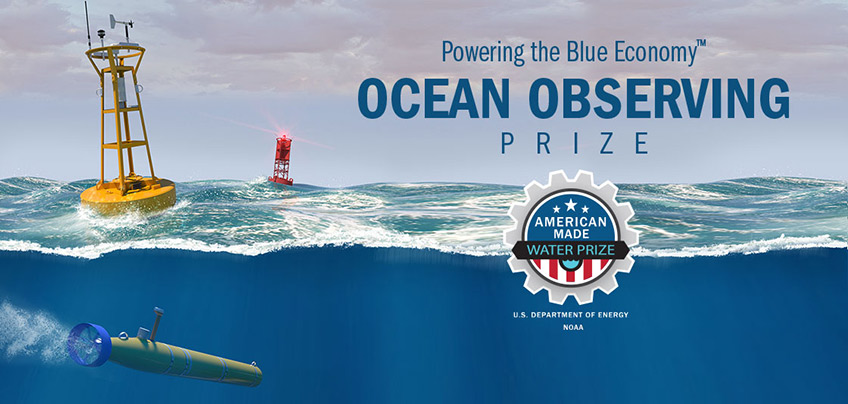Discovering New Waters: A Deeper Dive on Ocean Observing Prize Winners
Oceans cover 71% of the Earth—but most of those waters (80%) remain unmapped and rarely monitored due to limitations with existing ocean observing technologies, including energy constraints.
In the first stage of the Powering the Blue Economy™: Ocean Observing Prize, participants launched on a 90-day mission to DISCOVER new ways to help overcome energy constraints that stand in the way of effective and comprehensive ocean observation.
Eleven prize winners were announced in April, selected by the U.S. Department of Energy Office of Energy Efficiency and Renewable Energy's Water Power Technologies Office (WPTO) for their novel ideas to integrate ocean observing sensors and platforms with marine renewable energy technologies. DISCOVER Competition winners received a total of $125,000 in cash awards, and their ideas were used to help scope out the next phase of the Ocean Observing Prize.
CalWave Power Technologies was awarded $25,000 as the “Nautilus Grand Prize Winner” for xNode, a communications buoy powered by wave energy. CalWave’s xNode is a self-charging, lightweight power, data, and sensor node enabling the advancement of the ocean "internet of things." The flexible ocean-power platform uses a wave energy converter simulator to numerically model and validate power production and loads.
CalWave Power Technologies and four other DISCOVER stage winners all explored the competition’s “buoys, floats, and tags” theme. The following four teams were among 10 “Explorer Prize" winners, who each received $10,000 for their top-ranked submissions:
- Hailing from Seatrec, Green Power for Persistent Ocean Observing is a thermal energy harvesting technology that extends the lifetime of floats, allowing for more sensors and rapid sampling. The data collected can help better predict hurricanes and protect the ocean and adjacent land.
- Livewire: Wave Energy to Power Ocean Monitoring, Drew Lucas’ team, is from Del Mar Oceanographic. Livewire is an ocean-wave-powered vehicle with an onboard wave energy converter that can power observations for profiler floats. Through field test measurements, Livewire has shown potential for power to be generated from surface ocean waves independent of batteries.
- From Ocergy, OCG-Data: A Smart and Clean Ocean Observer is a zero-emission buoy that monitors meteorological and oceanographic observations, chemistry, environment, biodiversity, and ocean farming for offshore developers. The OCG-Data can power complex instruments such as light detection and ranging, bird radar, and a hydrophone that can locate large sea creatures up to 80 kilometers away.
- A team from the University of Pittsburgh proposed P.A.zolutions, a buoy covered with small piezoelectric strips to produce power for meteorological and oceanographic observations. Calculations show that piezoelectrics coating a buoy’s surface could provide uninterrupted power to onboard sensors and indicator lights.
“These DISCOVER winners represent a growing community of marine energy technology innovators who can help us address the challenges we face,” said Rob Raye, the National Renewable Energy Laboratory (NREL) principal investigator on this project. “Their winning ideas have the potential to extend the life and/or utility of ocean observing systems to better predict and track tropical storms, monitor fish stocks that communities depend on for sustenance, and improve the health and livelihoods of coastal communities, among other things.”

WPTO has partnered with the Integrated Ocean Observing System program at the National Oceanic and Atmospheric Administration (NOAA) on this prize. NREL and the Pacific Northwest National Laboratory are supporting WPTO and NOAA on the development and administration of the prize. The series of competitions continues with the Ocean Observing Prize DEVELOP Competition, which will focus on a single theme, challenging participants to present their ideas as functioning prototypes. In total, the DISCOVER and DEVELOP competitions will award up to $3 million in cash prizes and in-kind awards.
Learn more on the prize competition page and check back to read about the other DISCOVER stage winning teams.
Last Updated May 28, 2025
